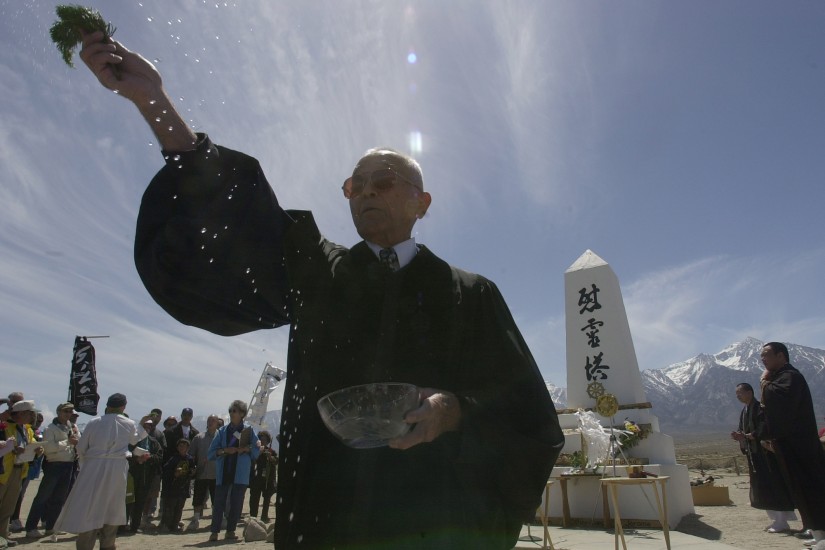I entered Manzanar from the south, drove past the two stone guard houses and stopped at the marker for the foundation of the first building. The sign read: “Internal Police.” Next to it were the cornerstones for the “Manzanar Free Press,” the camp paper run by detainees under the censorious eye of guards. The proximity of the two buildings seemed symbolic of our current predicament.
There are ghost towns, abandoned ranches and mining camps all over the Owens Valley. But Manzanar was wiped clean after the prison closed. The tarpaper barracks were chopped up and sold as cheap housing to returning GIs. The watchtowers were torn down, the spotlights and machine guns returned to Army bases in California and Nevada. They didn’t even leave the hospital, which could have served the local residents of Lone Pine and Independence and the few Owens Valley Paiute who hadn’t been uprooted by the government and relocated to Fresno, LA and San Francisco. It’s as if they wanted to wipe the memory of what happened here off the surface of the desert.
And Manzanar is a desert, averaging about 5 inches of rain year. Though, 110 years ago, it was a relatively lush one thanks to the meandering Owens River, which using the old ditch irrigation system first developed by the Paiutes enabled the valley to grow fruit trees, melons, beans, potatoes and alfalfa. That all ended in 1913 when the city of Los Angeles covertly acquired most of the land and all of the water rights in the valley and diverted the water into the Los Angeles aqueduct. Even today, the aqueduct remains locked behind gates and barbed wire fences, as if the water itself were a prisoner.
LA Power & Water owned the 6,000 acres of land that became Manzanar Concentration Camp, which it leased to the US Army in 1942. Many of the construction workers who built the camp formerly lived in the area until they lost their water to LA, including some members of the Paiute tribe. Sixty years earlier, the US Army had been dispatched to the Owens Valley to forcibly relocate more than 1000 Paiutes to Fort Tejan in order to clear the Manzanar area for white farmers, ranchers and miners.
Today the winds are fierce coming down off the Sierra, snow is flaring off the summit of Mt. Williamson and dust devils are dancing across the grounds of Manzanar. I park near the Internal Police site and walk into the heart of the concentration camp. Manzanar is laid out in a grid pattern of 68 “blocks”, which often contained 16 tarpaper barracks. All of them were removed shortly after then end of the war. In an attempt to make Manzanar a tourist destination, the Park Service has recreated several structures in Block 14: a mess hall, a barrack, and a women’s latrine, which includes toilets and showers. I got the impression that they included the showers to suggest that the US Army’s concentration camps weren’t like the Nazis’ camps. After all, they didn’t make replicas of the stockade, the forced labor sweatshops or military police buildings. These showers only poured out water, water that had been, like the prisoners themselves, illegally detained, relocated and impounded, but water none-the-less.
